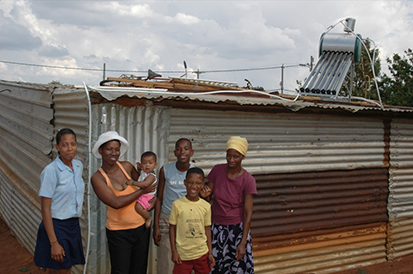| << Chapter < Page | Chapter >> Page > |
When cultures meet, technology can help, hinder, and even destroy. The Exxon Valdez oil spillage in Alaska nearly destroyed the local inhabitant’s entire way of life. Oil spills in the Nigerian Delta have forced many of the Ogoni tribe from their land and forced removal has meant that over 100,000 Ogoni have sought refuge in the country of Benin (University of Michigan, n.d.). And the massive Deepwater Horizon oil spill of 2006 drew great attention as it occurred in what is the most developed country, the United States. Environmental disasters continue as Western technology and its need for energy expands into less developed (peripheral) regions of the globe.
Of course not all technology is bad. We take electric light for granted in the United States, Europe, and the rest of the developed world. Such light extends the day and allows us to work, read, and travel at night. It makes us safer and more productive. But regions in India, Africa, and elsewhere are not so fortunate. Meeting the challenge, one particular organization, Barefoot College, located in District Ajmer, Rajasthan, India, works with numerous less developed nations to bring solar electricity, water solutions, and education. The focus for the solar projects is the village elders. The elders agree to select two grandmothers to be trained as solar engineers and choose a village committee composed of men and women to help operate the solar program.
The program has brought light to over 450,000 people in 1,015 villages. The environmental rewards include a large reduction in the use of kerosene and in carbon dioxide emissions. The fact that the villagers are operating the projects themselves helps minimize their sense of dependence.

Around the same time that pastoral societies were on the rise, another type of society developed, based on the newly developed capacity for people to grow and cultivate plants. Previously, the depletion of a region’s crops or water supply forced pastoral societies to relocate in search of food sources for their livestock. Horticultural societies formed in areas where rainfall and other conditions allowed them to grow stable crops. They were similar to hunter-gatherers in that they largely depended on the environment for survival, but since they didn’t have to abandon their location to follow resources, they were able to start permanent settlements. This created more stability and more material goods and became the basis for the first revolution in human survival.
While pastoral and horticultural societies used small, temporary tools such as digging sticks or hoes, agricultural societies relied on permanent tools for survival. Around 3000 B.C.E., an explosion of new technology known as the Agricultural Revolution made farming possible—and profitable. Farmers learned to rotate the types of crops grown on their fields and to reuse waste products such as fertilizer, which led to better harvests and bigger surpluses of food. New tools for digging and harvesting were made of metal, and this made them more effective and longer lasting. Human settlements grew into towns and cities, and particularly bountiful regions became centers of trade and commerce.

Notification Switch
Would you like to follow the 'Introduction to sociology 2e' conversation and receive update notifications?